Home gardeners in Louisiana love to grow their own tomatoes for a variety of reasons. Tomatoes are an incredibly versatile and popular vegetable, offering a variety of uses in the kitchen and garden. They are also one of the most popular vegetables to grow in home gardens due to their hardiness, prolific yields, and ease of cultivation. Tomatoes are a great addition to any garden, offering a variety of colors, flavors, and textures. They are also a great source of vitamins and minerals, making them a nutritious addition to any meal. Growing tomatoes in Louisiana is also an enjoyable activity, providing an opportunity to connect with nature and experiment with different varieties.
When to Plant Tomatoes in Louisiana
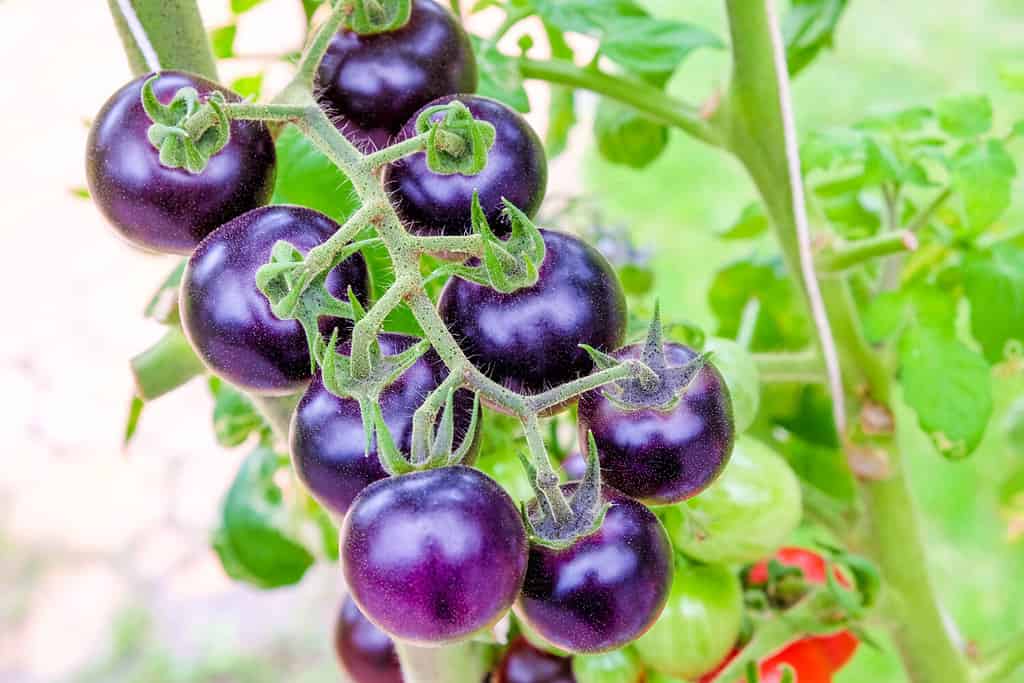
One of the biggest reasons to grow tomatoes in Louisiana is the amazing variety of heirloom tomatoes!
©Nattapol_Sritongcom/Shutterstock.com
Tomatoes are one of the most popular vegetables grown in Louisiana. Knowing when to plant tomatoes is crucial to ensure a successful harvest. Generally speaking, the best time to plant tomatoes in Louisiana is during the spring.
- The optimal time to plant tomatoes is after the threat of frost has passed. Which is typically on March 15th in the south of the state and April 1st in northern Louisiana. We have provided a frost-date chart for you below.
- Planting too early could lead to frost damage while planting too late could result in reduced yields. Tomatoes prefer warmer weather and need at least 8 hours of sunlight for optimal growth.
- It’s important to keep an eye on the weather forecast when planning to plant tomatoes. If heavy rains are expected, or temperatures drop below freezing, it’s best to delay planting until conditions improve.
- Additionally, soil temperature should be at least 60 degrees before planting tomatoes. You can use an inexpensive soil thermometer to test out the soil temperature before planting.
Overall, the best time to plant tomatoes in Louisiana is usually during the spring months of March or April after the threat of frost has passed. With proper planning and preparation, you can ensure a successful harvest of delicious tomatoes.
Louisiana Frost Dates
| Area | Last Spring Frost Date | First Fall Frost Date |
|---|---|---|
| Lake Charles, Louisiana | March 1st | December 1st |
| Lafayette, Louisiana | February 25th | December 1st |
| Shreveport, Louisiana | March 15th | November 25th |
| Baton Rouge, Louisiana | March 8th | November 25th |
| New Orleans, Louisiana | February 17th | December 15th |
Prepare the Soil
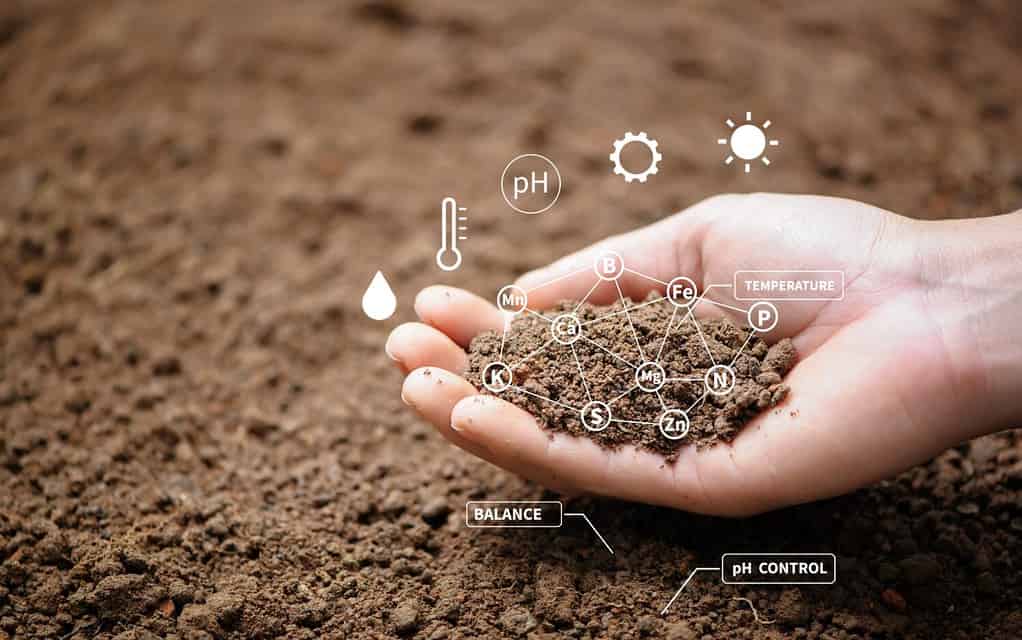
Tomatoes have deep roots, so prepare the soil well before planting them.
©Deemerwha studio/Shutterstock.com
Growing tomatoes in Louisiana requires proper preparation of the garden beds and soil. To ensure the best results, consider the following steps:
- Remove any weeds, debris, and stones from the garden beds. This can be done by hand or with a hoe.
- Dig the soil to a depth of at least 8 inches, making sure to loosen the soil in the process.
- Spread a 3-inch layer of compost or aged manure over the soil. Compost or aged manure is an ideal source of nutrients for tomatoes.
- Use a rake to mix the compost or manure into the soil.
- Add a 2-inch layer of mulch around the plants. Mulch helps to retain moisture and prevent weeds.
- Water the soil deeply. This will help to ensure the roots are well-hydrated.
By using these steps, gardeners can properly prepare the garden beds and soil for planting tomatoes in Louisiana. Doing so will help to ensure the best possible results for a successful and bountiful tomato harvest.
Starting From Seed
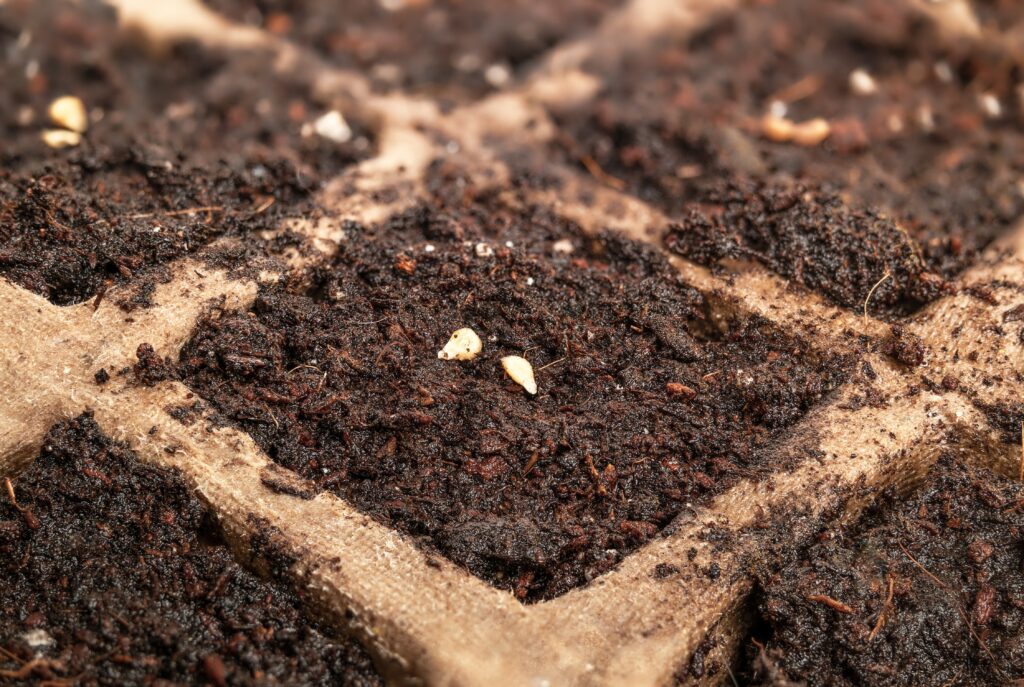
If you want an even more abundant harvest, plant your tomato seeds indoors 60 days before the last spring frost date.
©sophiecat/Shutterstock.com
Starting tomatoes from seed is a popular and rewarding way to kickstart your tomato growing season. By starting seeds indoors, you have the advantage of controlling the environment and ensuring optimal conditions for germination and early growth. But how do you go about starting tomatoes from seed? It’s relatively simple!
- First, determine the type of tomato variety you want to grow, as different varieties may have varying requirements in terms of growing time. On average, it takes around 40-60 days for tomatoes to grow from seed indoors before they can be transplanted into your garden.
- To get started, it’s crucial to know your area’s average spring frost date. This information will help you plan out when exactly to begin sowing your tomato seeds indoors. To calculate this timing accurately, subtract 60 days from your local last spring frost date in the chart above.
Let’s consider an example: if your area experiences its last spring frost on March 8th, then counting back 60 days places us at February 8th as the ideal day to start planting tomato seeds indoors.
By following this timeline, you give yourself ample time for the seeds to germinate and develop into sturdy young plants ready for transplantation once outdoor conditions are favorable.
Seed Starting Equipment
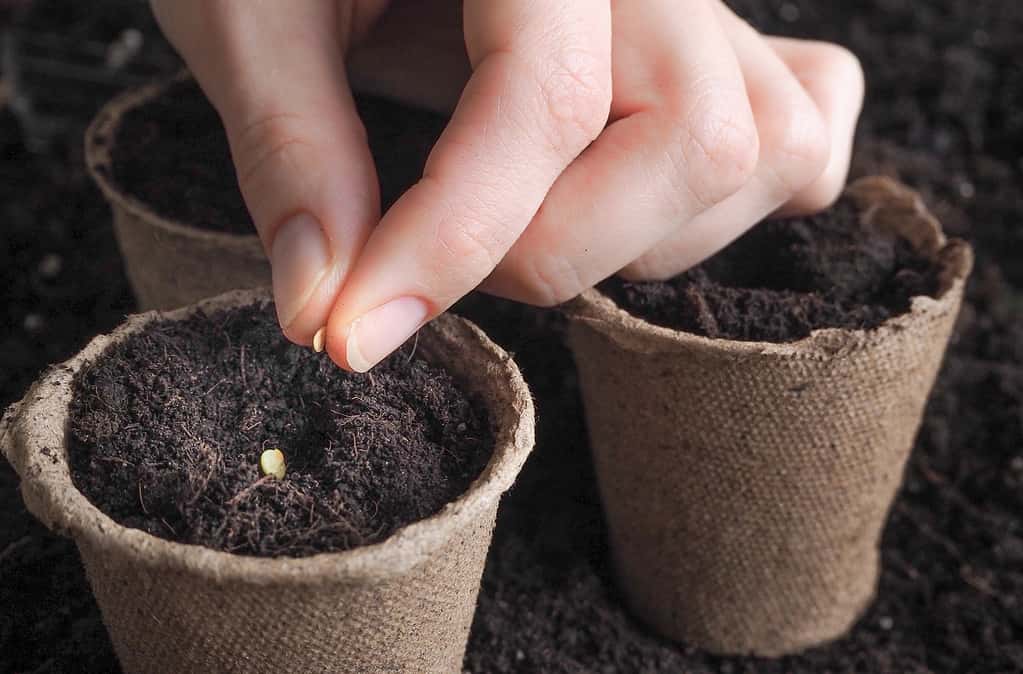
If you want to save money growing tomatoes in Louisiana, buy reusable seed starting kits.
©Stanislav71/Shutterstock.com
Starting tomato plants indoors in the spring requires a few essential pieces of equipment to ensure successful growth and development. To kickstart your gardening journey, there are several items you should consider having on hand.
- Firstly, investing in quality seed trays or flats is crucial for starting tomato seeds indoors. These shallow containers provide ample space for the seeds to germinate and establish strong root systems before transplanting them outdoors. Opt for trays with drainage holes to prevent waterlogging and promote healthy growth.
- Next, don’t forget about seed-starting soil mix or potting mix specifically formulated for young seedlings. This lightweight medium provides optimal moisture retention while allowing proper airflow around delicate roots. Look for mixes that contain peat moss, perlite, vermiculite, or coconut coir, as these components facilitate nutrient absorption and drainage.
- In addition to suitable containers and soil mixtures, providing consistent warmth is vital during the early stages of tomato plant growth. Consider acquiring a heat mat or propagation mat designed explicitly for fostering germination by maintaining an ideal temperature range (around 70-80°F). Placing this mat beneath the seed trays ensures uniform heat distribution throughout the growing area, promoting faster and more robust sprouting.
- To mimic natural sunlight conditions necessary for healthy plant development indoors, equipping yourself with fluorescent grow lights or LED grow lamps becomes imperative. These artificial light sources emit wavelengths suitable for stimulating photosynthesis in young plants without generating excessive heat that could potentially harm them. Positioning these lights directly above your seedlings will help them grow strong before you move them outdoors.
How to Plant

If you want to grow tomatoes in Louisiana, but don’t have space, never fear. Tomatoes grow in pots!
©AngieC333/Shutterstock.com
Tomatoes are a popular vegetable for home gardeners in Louisiana. To ensure successful planting, tomato plants must be planted in the right way. Here are some tips on how to plant tomatoes in Louisiana.
- Choose the right variety of tomatoes for the region. Tomatoes are categorized as determinate (bush) or indeterminate (vining). Determinate tomatoes produce a single crop, while indeterminate tomatoes can continue to produce all summer long.
- Plant in well-draining soil. Tomatoes need soil that is rich in organic matter and drains well. If your soil is too wet, mix in some sand to help with drainage.
- Plant in an area that gets at least 8 hours of sunlight. Tomatoes need plenty of sunlight to grow and produce fruit.
- Space your plants. Plant your tomatoes in an area with enough space between each plant.
- Water your plants. Tomatoes need to be watered regularly. Make sure to give your plants a deep watering at least once a week, and check the soil to make sure it is not too wet or too dry.
By following these tips, you can successfully plant tomatoes in Louisiana and enjoy a bountiful harvest.
How to Prune
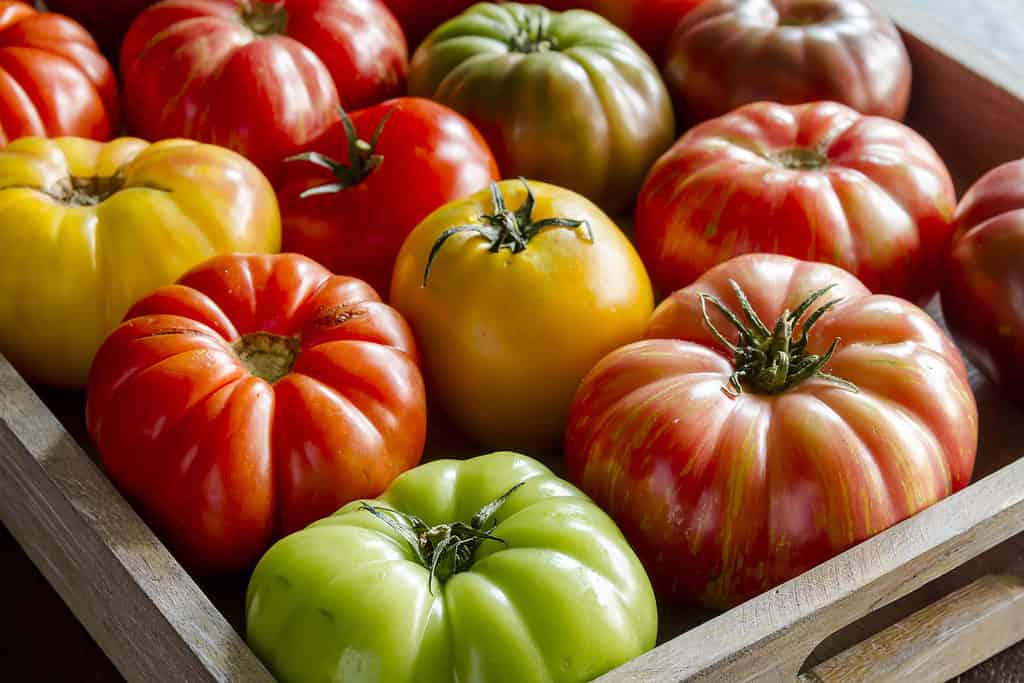
Tomatoes contain vitamins A and C, beta-carotene, calcium, and fiber.
©Teri Virbickis/Shutterstock.com
Pruning tomato plants is important for promoting healthy growth and large fruits. Additionally, pruning helps to keep the plant from becoming unruly and unmanageable.
- On determinate bush types, prune all suckers up to the first cluster of flowers. This will help channel the plant’s energy into creating larger fruit.
- On indeterminate vining tomatoes, prune all suckers from the ground up to the third cluster of flowers. This will encourage healthy growth and provide more access to sunlight for the foliage canopy. Pruning also helps to improve air circulation and prevent disease.
- Pruning is best done in the early morning when the plant is cool, and the leaves are not as likely to be damaged.
- Be sure to use sharp, clean pruning shears to avoid damaging the plant.
- Pruning can be done all season long, but be sure to stop pruning no later than the beginning of August. Pruning too late in the season can reduce the number of flowers and fruits produced.
How to Fertilize Tomatoes
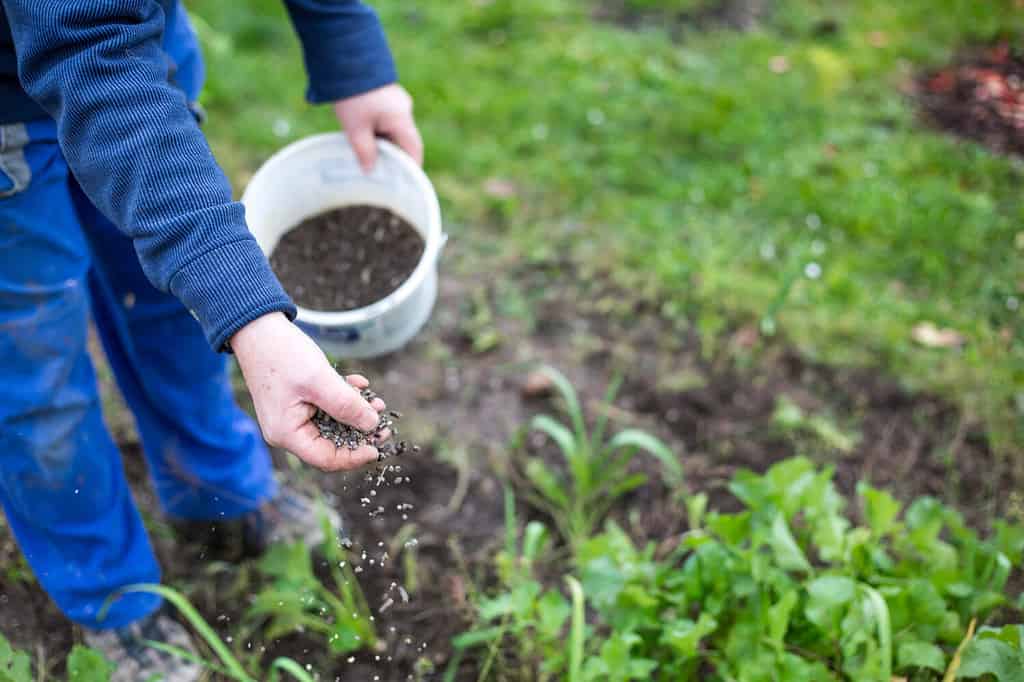
Tomatoes are heavy feeders and require nitrogen fertilizer to thrive.
©Simon Kadula/Shutterstock.com
When it comes to fertilizing your tomato plants in Louisiana, timing is key. Nitrogen plays a crucial role in promoting vigorous foliage development and overall plant health. By supplying your tomato plants with an adequate amount of nitrogen during these specific stages, you are ensuring they have access to this essential nutrient when they need it most.
- Providing them with an extra dose of nitrogen during the first and second bloom set can significantly boost their growth and yield. To achieve this, you can opt for calcium nitrate or any other fertilizer that contains 15 percent nitrogen. The percentage value indicates the amount of nitrogen present in the product.
- To apply the fertilizer, simply measure out one teaspoon per plant and distribute it evenly around the base or root zone. This dosage should provide enough nitrogen to support optimal growth without overwhelming the plants.
- Remember that while nitrogen is beneficial for tomato plants, excessive amounts can lead to issues such as delayed fruiting or increased susceptibility to diseases. Therefore, it’s important not to overdo it – sticking to recommended dosages will help maintain a healthy balance.
Common Tomato Diseases in Louisiana
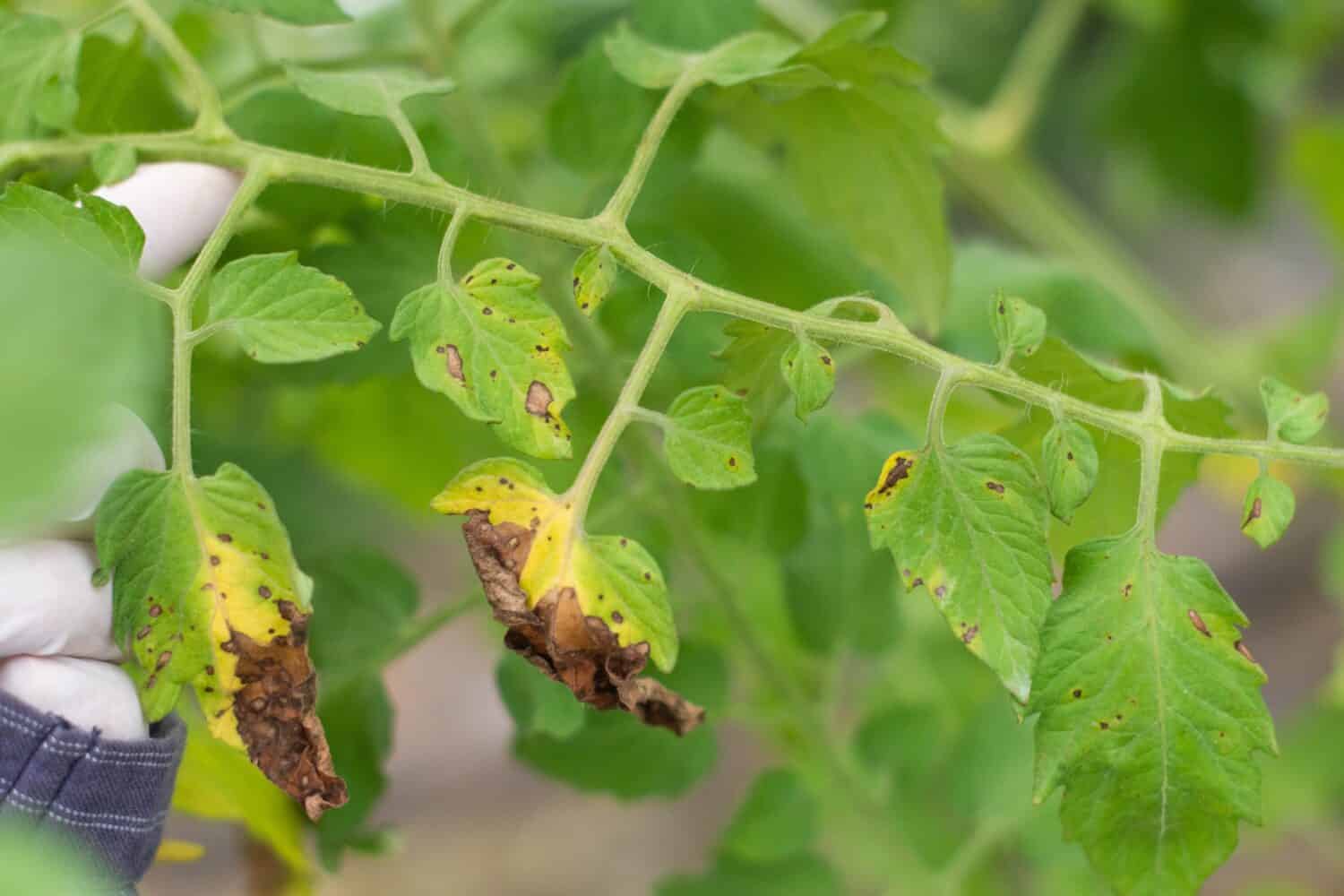
Early blight is a common plant disease for gardeners growing tomatoes in Louisiana.
©Gondola/Shutterstock.com
Tomatoes are a beloved crop in Louisiana, but like any other plant, they can fall victim to various diseases. Understanding the common tomato diseases that affect this region is crucial for successful cultivation. Here are three prevalent tomato diseases in Louisiana and their recommended treatments:
- Early Blight (Alternaria solani): Early blight is a fungal disease that typically appears during warm and humid conditions, which are often experienced in Louisiana’s climate. It manifests as dark brown or black lesions on the lower leaves of the tomato plant, eventually spreading upwards if left untreated. To combat early blight, it is essential to practice good sanitation measures such as removing infected foliage promptly and disposing of it away from your garden area. Additionally, applying fungicides containing copper or chlorothalonil can help protect healthy leaves by inhibiting further spread.
- Late Blight (Phytophthora infestans): Late blight poses a significant threat to tomatoes throughout Louisiana due to its destructive nature. This highly contagious fungal disease thrives under cool and wet conditions—a characteristic often observed during rainy seasons here. Infected plants display water-soaked spots on leaves that quickly enlarge into purplish-black lesions with white mold growth underneath during high humidity periods. Treating late blight requires immediate action. Affected plants should be carefully uprooted and disposed of immediately—preferably burned—to prevent further contamination within the garden or nearby farms where spores could spread rapidly through wind or rainwater runoff.
- Tobacco Mosaic: One of the most common tomato diseases in Louisiana is Tobacco Mosaic. Infected plants usually exhibit mottled or streaked patterns on their leaves, with yellow or light-green areas surrounded by dark-green veins. Occasionally, leaf distortion and curling may occur as well. Preventing the spread of Tobacco Mosaic requires implementing strict hygiene practices in your garden or greenhouse. Avoid touching healthy plants after handling infected ones without thoroughly washing your hands first. Regularly disinfect tools used for pruning or trimming to prevent cross-contamination.
Common Tomato Pests in Louisiana
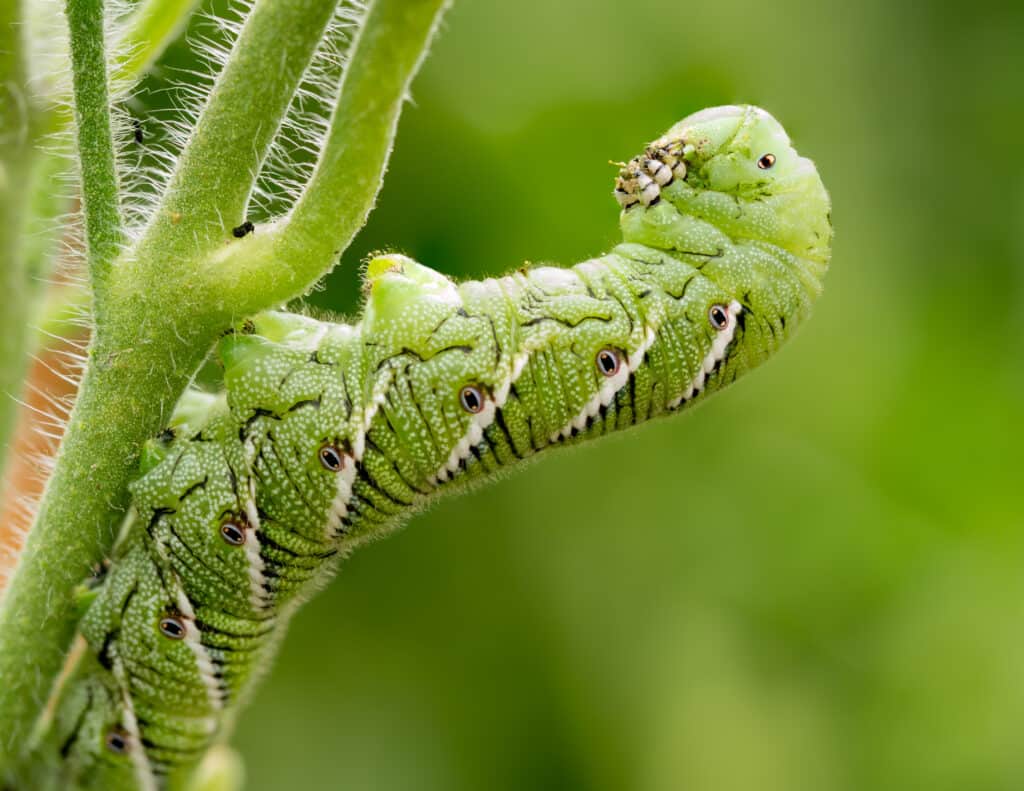
Tomato hornworms have big appetites and can eat many tomato leaves in a single serving.
©J Gillispie/Shutterstock.com
In the bountiful state of Louisiana, where tomato plants thrive under the warm sun and humid climate, there are common pests or insects that gardeners often encounter while cultivating these beloved fruits. Understanding these adversaries and their treatment methods is crucial to ensuring a successful tomato harvest.
- Aphids: These tiny, soft-bodied insects with pear-shaped bodies can wreak havoc on tomato plants by sucking sap from stems and leaves. They multiply rapidly, forming large colonies that weaken the plant’s overall health. To combat aphids, gardeners in Louisiana can employ several approaches. One effective method is using insecticidal soaps or horticultural oils specifically designed for aphid control. These products suffocate the pests upon contact without harming beneficial insects like ladybugs or bees. Another natural remedy involves spraying water forcefully onto infested foliage to dislodge and disrupt aphid populations.
- Tomato Hornworms: Large green caterpillars, known as tomato hornworms, pose a significant threat to tomato plants in Louisiana gardens due to their voracious appetite for foliage and fruit alike. Identifiable by their size (up to 4 inches long) and distinctive markings resembling white stripes along their bodies, they are masters of camouflage among the leaves of a tomato plant. Gardeners can manually remove these pests from affected plants by handpicking them carefully since they blend seamlessly into the foliage. Alternatively, they may choose biological controls such as introducing parasitic wasps (Brachonids).
How to Use Tomatoes
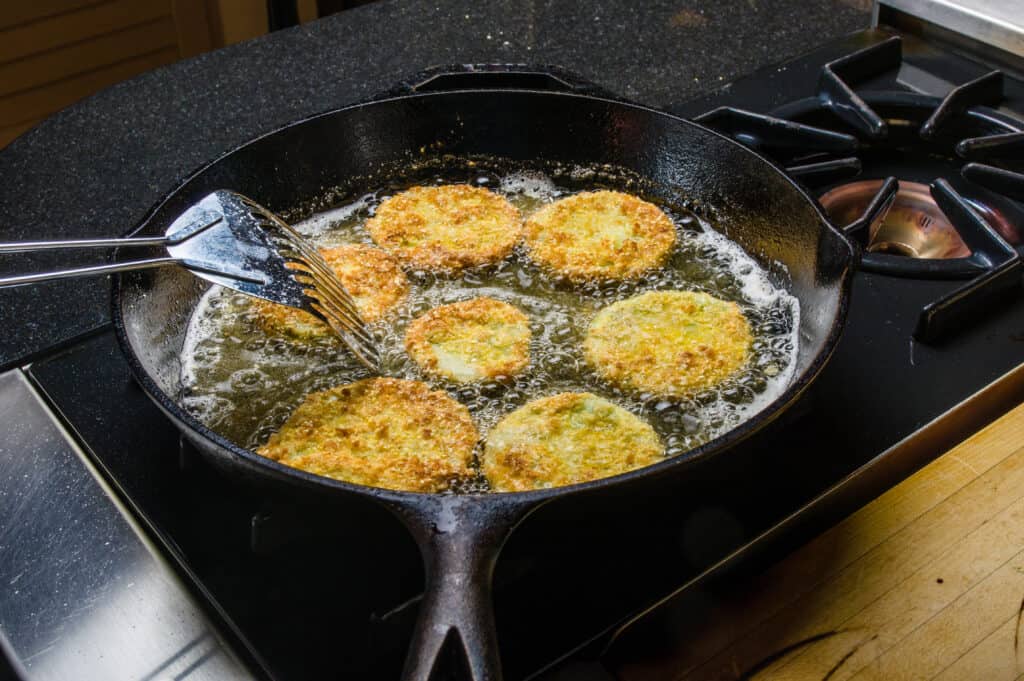
Fried green tomatoes are a popular way to use up an extra-large tomato harvest.
©Zigzag Mountain Art/Shutterstock.com
If you find yourself with an abundant harvest of tomatoes from your Louisiana garden, there are numerous delicious ways to make the most of this flavorful fruit. Here are three common and versatile methods that will help you savor the taste of your homegrown tomatoes:
- Fresh Tomato Salsa: Whip up a vibrant and tangy salsa using your fresh garden tomatoes as the star ingredient. Dice the ripe tomatoes into small pieces and combine them with finely chopped onions, jalapeños (if desired), cilantro, lime juice, salt, and pepper. This zesty homemade salsa can be enjoyed as a dip with tortilla chips or used as a topping for tacos, grilled meats, or even scrambled eggs.
- Classic Caprese Salad: Indulge in the simplicity of a classic Caprese salad that showcases the natural sweetness and juiciness of ripe tomatoes. Slice the tomatoes into thick rounds and layer them alternately with slices of creamy mozzarella cheese on a platter or individual plates. Drizzle extra-virgin olive oil over it all, along with some balsamic glaze or reduction for added depth of flavor. Sprinkle fresh basil leaves on top before serving to enhance its aromatic appeal.
- Homemade Tomato Sauce: Transform your surplus tomato bounty into a rich and flavorsome homemade tomato sauce. Then you can use it in countless soups, stews, pasta dishes, and gumbos throughout the year. Prepare tomatoes by blanching them in boiling water for 30 seconds; transfer to a bowl of ice water. Peel, then chop. Sauté diced onions and minced garlic in a pot over medium heat until fragrant and translucent. Add chopped tomatoes, fresh herbs, salt, and pepper. Simmer on low heat for at least an hour, stirring occasionally.
Thank you for reading! Have some feedback for us? Contact the AZ Animals editorial team.








